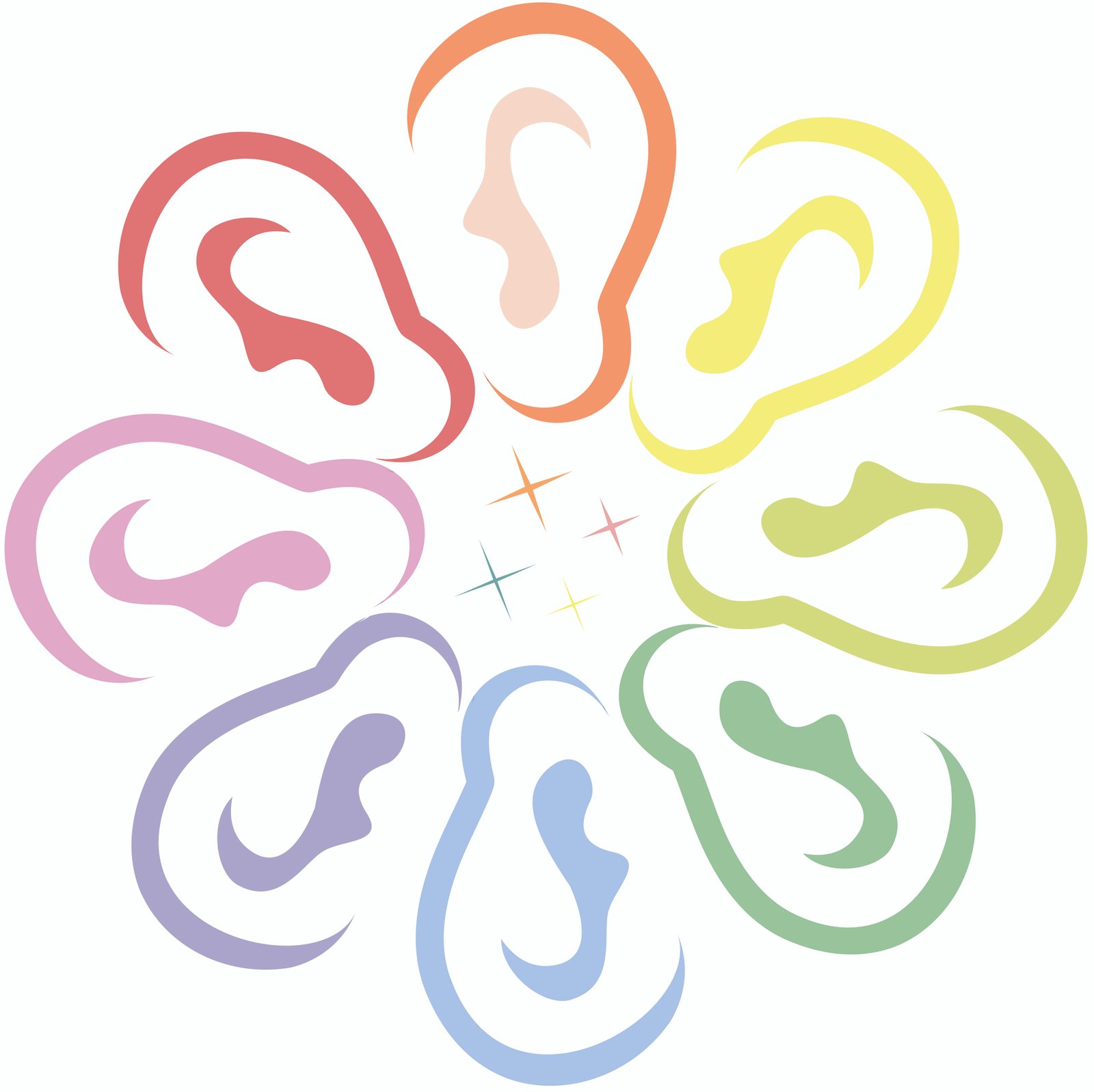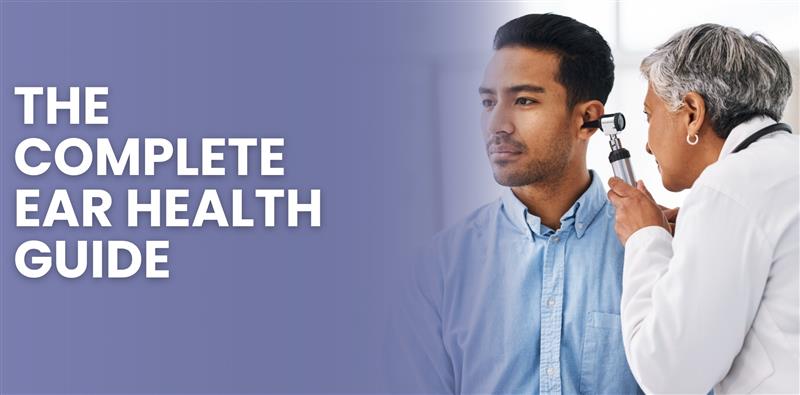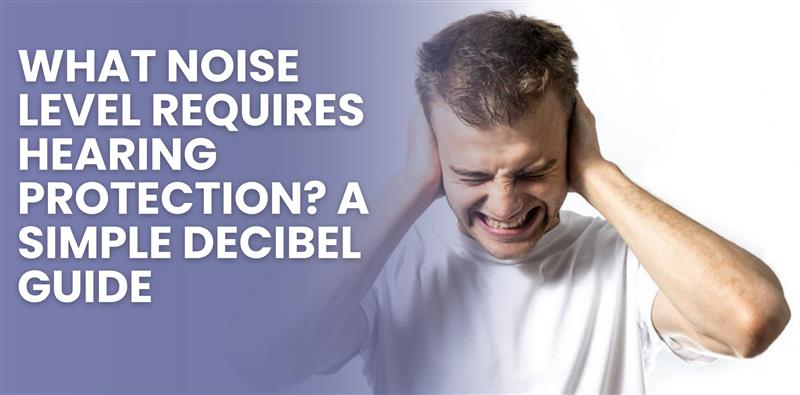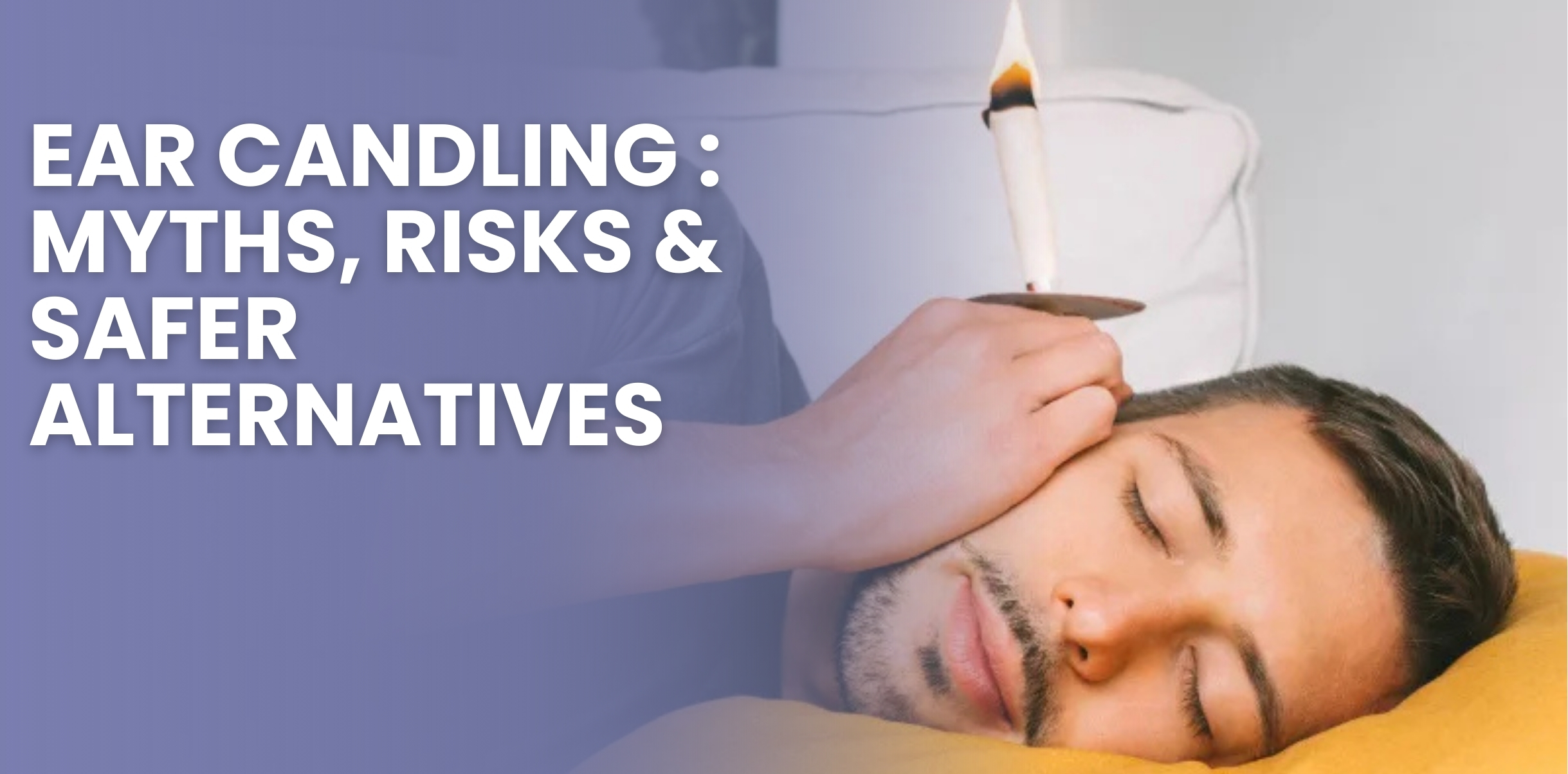If you have typed what is ear syringing into Google, you are probably dealing with a stubborn blocked ear and want the fastest, safe fix.
Ear syringing has been used for decades in General Practitioner (GP) surgeries and pharmacies.
It can be helpful in certain cases, but it is not suitable for everyone.
In this guide, you will learn exactly how ear syringing works, who should not try it, what to expect if you use an ear syringing kit, and the situations where microsuction ear wax removal is the smarter choice for comfort and safety.
Our goal is simple.
Give you clear, friendly information so you can decide whether to book private ear syringing, choose microsuction, or start with olive oil drops at home and watchful waiting.
What is ear syringing?
Ear syringing is a procedure that uses a controlled stream of warm water to wash softened ear wax out of the ear canal. A clinician aims the water along the canal wall rather than directly at the eardrum, so loosened wax and water flow back into a basin.
It is sometimes called ear irrigation.
In the UK, many GP practices have reduced syringing because of training and safety requirements, while private clinics and some pharmacies still offer it.
People like syringing because it feels familiar and is quick when it works.
The key is preparation.
If the wax is hard and dry, water alone may not dislodge it. Softening the plug first is essential.
How does ear syringing work?
Here is the usual step-by-step pathway so you know what to expect:
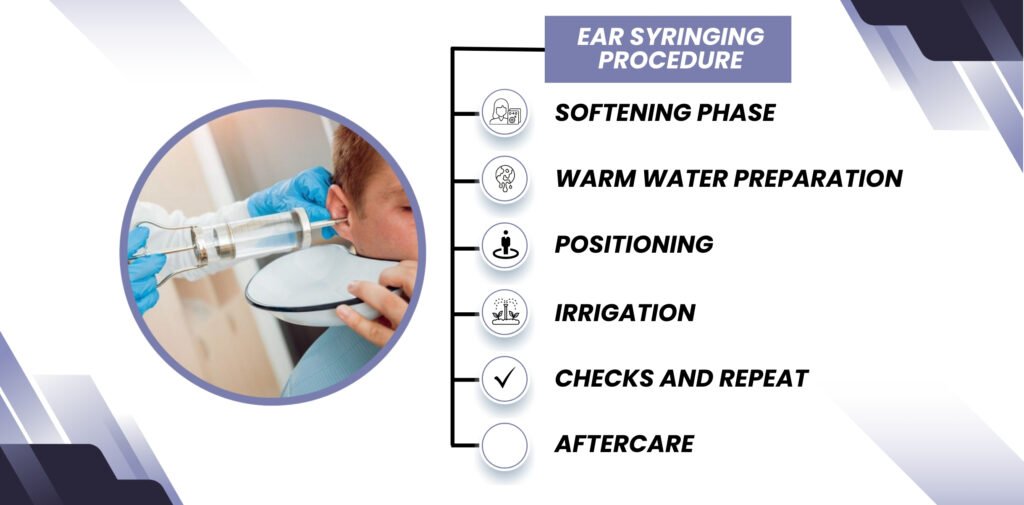
- Softening phase
For three to five days, you use Ear wax removal Olive oil drops or a pharmacy softener. This soaks into the plug and helps it break up. If drops sting or you suspect a perforation, stop and seek advice. - Warm water preparation
In the clinic, the nurse or pharmacist warms sterile water or saline to body temperature. Cold or hot water can trigger dizziness, so temperature matters. - Positioning
You sit upright with a towel over your shoulder and a kidney shaped basin under the ear. The clinician gently straightens the ear canal by pulling the outer ear backward and upward. - Irrigation
A hand syringe or low-pressure electric irrigator sends a gentle stream along the canal wall. Water swirls around the wax and carries pieces out into the basin. You may hear sloshing or feel brief fullness. - Checks and repeat
The clinician rechecks with an otoscope. If wax remains, short rounds of irrigation are repeated. If the ear becomes painful or you feel unwell, the procedure stops. - Aftercare
You are advised to keep the ear dry for 24 hours and report any pain, discharge, or persistent hearing loss.
That is the ideal scenario.
In real life, canal anatomy, very hard wax, or hidden skin conditions can make the outcome less predictable.
Also Read>>>>
How to Open a Blocked Ear at Home: Why You Might Rethink DIY Fixes
Benefits of ear syringing
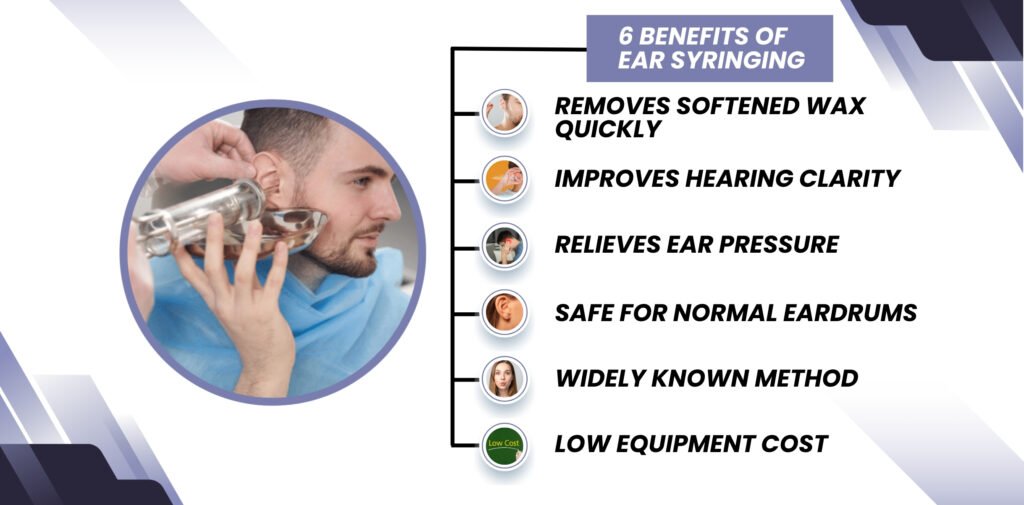
- Widely known method
Many patients have had it at a GP surgery before and understand the process. - Quick access in some settings
Pharmacies and some private clinics can offer same day appointments. - Low equipment cost
A simple system can be used when specialist tools are unavailable. - Useful when wax is soft and shallow
Recently formed wax that sits near the entrance often clears well with water.
When these boxes are ticked, syringing can restore hearing within minutes and the experience can be straightforward.
Risks and when to avoid syringing
No procedure is risk free. With syringing, water is introduced into a delicate space. The main concerns are:
- Ear infection
Moisture can irritate skin and create a warm environment for bacteria. People with eczema, dermatitis, or a history of swimmer’s ear are at higher risk. - Eardrum perforation
Rare yet serious. It is more likely if the pressure is too high, if the eardrum is already thin, or if the jet accidentally hits the drum. - Dizziness or nausea
Even at the right temperature, water in the canal can briefly upset balance. - Pain or bleeding
Scratches or hidden inflammation can become obvious once water flows.
Ear syringing kit at home: should you try it?
Search results often show low cost ear syringing kit products. They usually include a bulb syringe, a bottle, and instructions. While these kits look simple, two things decide safety. Pressure and preparation.
Safer kit tips if you choose to try at home
- Use softening drops for several days before any rinse.
- Never aim a stream straight at the eardrum. Direct flow along the canal wall.
- Use body temperature saline, not hot or cold water.
- Squeeze very gently and stop if you feel pain, dizziness, or noise distortion.
Even with perfect technique, syringing kits cannot match clinical inspection. Wax may sit deep, skin may be fragile, and infection can hide behind the plug.
If your first gentle attempt fails, stop and book a professional review instead of forcing more water into the ear.
Private ear syringing and Professional ear syringing in London
Private ear syringing can be convenient when local GP services do not offer irrigation.
In London, pharmacies and independent practices sometimes provide it, often with short waits and simple pricing.
What varies most is clinician training and what backup method is available if syringing fails. A good clinic will explain benefits and risks, check the eardrum first, and switch to another method if water is not safe.
At Dewaxify, we focus on microsuction ear wax removal because it is a dry technique performed under direct vision.
Many London clinics have moved this way.
If you specifically want syringing and you are a safe candidate, we can advise on preparation and refer you, yet for most patients we recommend microsuction for comfort and reliability.
Microsuction vs Syringing: which should you choose
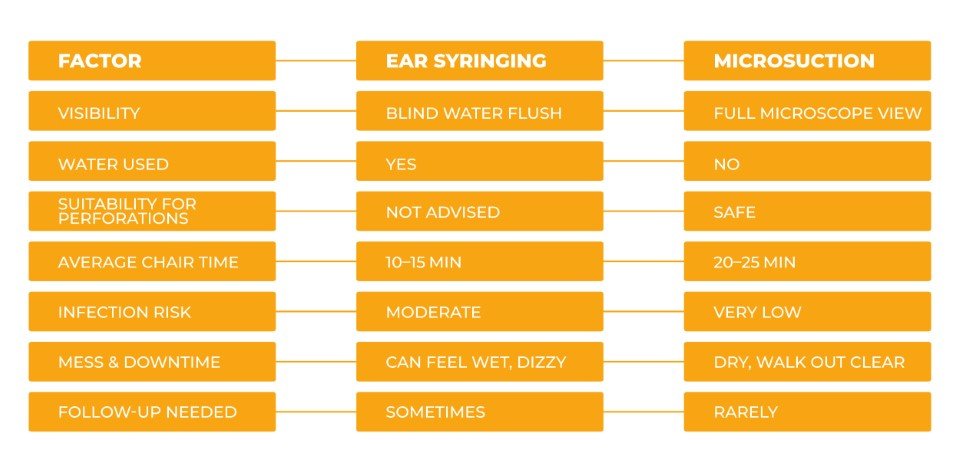
It helps to compare the two approaches side by side.
- Visibility
Syringing is a blind water wash. Microsuction uses a bright microscope and camera, so the audiologist removes only wax, not healthy skin. - Moisture
Syringing introduces water. Microsuction is dry, which lowers infection risk and is safer for perforations. - Speed and recovery
Syringing can need several rounds. Microsuction typically clears the plug in one continuous pass and you walk out ready to drive or work. - Suitability
If you have ear tubes, chronic infections, or previous surgery, choose microsuction. If budget and immediate availability are the only limits and your ears are healthy, syringing may be considered.
If you are unsure which path fits you, take our free hearing test online to benchmark your current hearing, then contact us for friendly advice. We will guide you without pressure.

Preparing for any ear wax removal
Good preparation makes every method safer and faster.
- Use olive oil drops twice a day for three to five days unless told otherwise.
- Keep water out of the ears while you are softening the plug.
- Pause in ear headphones during the prep window.
- Tell your clinician about blood thinners, diabetes, eczema, previous infections, and any ear surgery.
If you wear hearing aids, bring them to your appointment so we can check performance after clearing the wax.
Aftercare & Prevention
Once your ears are clear, protect the result.
- Keep ears dry for 24 hours after syringing.
- For swimmers, consider custom ear plugs to reduce moisture exposure.
- If you naturally produce heavy wax, use one evening of olive oil drops each month.
- Choose over ear headphones for long listening sessions. In ear tips can compact wax.
- Run a free hearing test online once a year to spot early changes.
- Avoid cotton buds. They push wax deeper and can scratch delicate skin.
When syringing is not enough
Sometimes water will not budge a plug, or the ear canal is too narrow for safe irrigation. Other times we discover an underlying infection, eczema, or a perforation that makes water a poor choice.
In all of these situations, microsuction ear wax removal offers a precise alternative.
At Dewaxify, we enhance microsuction with high definition video otoscopy and an AI overlay that outlines wax edges in real time. This guidance helps the clinician work quickly and gently, and you can watch your own before and after on screen if you wish.
FAQs
Is ear syringing painful
It should not be. You may feel pressure or brief fullness. Any sharp pain is a stop sign.
How many sessions will I need
Many people clear with one visit. If wax is very hard, you might need more softening and a second attempt or a switch to microsuction.
Is ear syringing safe for children
It depends on age, anatomy, and history. Many clinics prefer microsuction for children because it is dry and precise.
Can I just keep using olive oil drops
For mild build up, olive oil alone may be enough over time. For dense plugs, drops are a primer, not the full fix.
What if my ear is blocked by infection rather than wax
If there is discharge, fever, or strong pain, you may have otitis externa or media. Do not syringe. Seek a clinical exam first.
